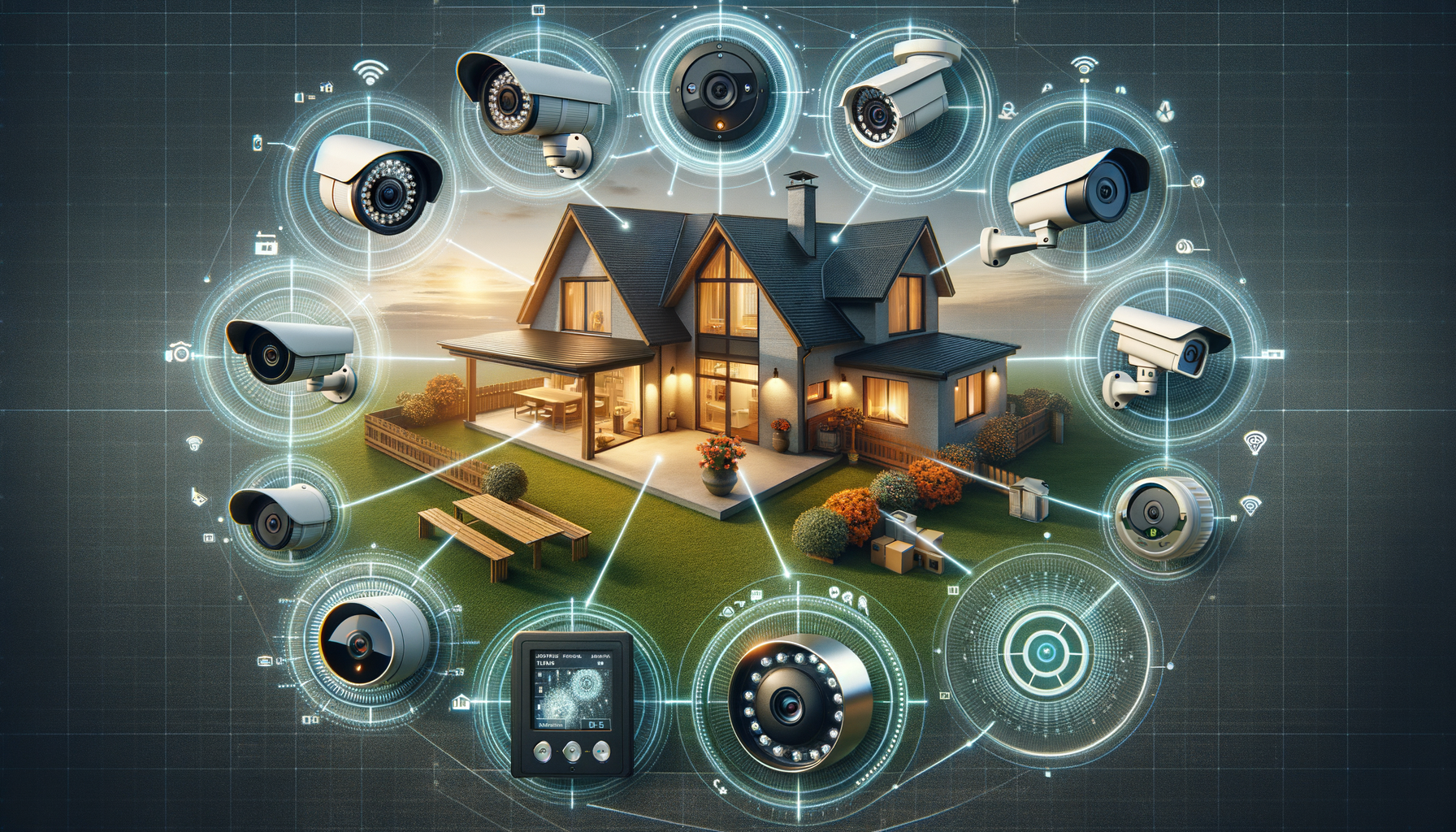The Growing Importance of Home Surveillance
In today’s fast-paced world, ensuring the safety and security of your home has become more crucial than ever. With technological advancements, security and surveillance cameras have emerged as effective tools for safeguarding residential properties. These devices not only deter potential intruders but also provide homeowners with peace of mind by allowing them to monitor their premises remotely. As urban areas become more densely populated, the need for reliable home security solutions continues to rise.
Surveillance cameras offer several benefits, including real-time monitoring, remote access, and evidence collection. They serve as a deterrent to criminal activities, as the presence of cameras makes potential intruders think twice before targeting a property. Additionally, many modern systems allow homeowners to access live feeds via their smartphones or computers, providing flexibility and control over their home’s security.
The integration of smart technology with surveillance systems has further enhanced their functionality. Features such as motion detection, night vision, and automated alerts have made these cameras more efficient and user-friendly. As a result, homeowners can customize their security systems to suit their specific needs, ensuring comprehensive coverage and protection.
Types of Surveillance Cameras for Home Use
There is a wide variety of surveillance cameras available on the market, each designed to meet specific security needs. Understanding the different types can help homeowners make informed decisions when choosing a system for their property. Here are some common types of surveillance cameras:
- Bullet Cameras: These are typically cylindrical in shape and are known for their long-range capabilities. They are ideal for outdoor use and can be mounted on walls or ceilings.
- Dome Cameras: Recognized by their dome-shaped housing, these cameras are often used indoors. They offer a wide field of view and are less obtrusive than bullet cameras.
- PTZ Cameras: PTZ stands for Pan-Tilt-Zoom, and these cameras offer the ability to control the viewing angle and zoom in on specific areas. They are suitable for large properties requiring extensive coverage.
- Wireless Cameras: These cameras connect to the home’s Wi-Fi network, allowing for easy installation without the need for extensive wiring. They are perfect for renters or those who prefer a less invasive setup.
Each type of camera has its own set of features and benefits, making it essential for homeowners to assess their security needs before purchasing a system. Factors such as location, coverage area, and budget should be considered to ensure optimal protection.
Key Features to Consider When Choosing Surveillance Cameras
When selecting a surveillance camera system for your home, it’s important to consider various features that can enhance security and usability. Here are some key features to keep in mind:
- Resolution: Higher resolution cameras provide clearer images, which can be crucial for identifying intruders or incidents. Look for cameras with at least 1080p resolution for optimal clarity.
- Night Vision: This feature allows cameras to capture clear footage in low-light conditions, ensuring round-the-clock surveillance. Infrared LEDs are commonly used to enhance night vision capabilities.
- Motion Detection: Cameras equipped with motion detection can alert homeowners to any unusual activity, reducing the need for constant monitoring. This feature can also help conserve storage space by recording only when motion is detected.
- Weather Resistance: For outdoor cameras, it’s important to choose models that can withstand various weather conditions. Look for cameras with an IP rating that indicates their level of protection against dust and moisture.
- Storage Options: Consider how the footage will be stored, whether on a local device, cloud storage, or both. Cloud storage offers the advantage of remote access and protection against data loss due to device damage.
By carefully evaluating these features, homeowners can select a surveillance system that meets their specific needs and provides effective security for their property.
Integrating Surveillance Cameras with Smart Home Systems
The integration of surveillance cameras with smart home systems has revolutionized the way homeowners manage their security. By connecting cameras to smart devices, users can enjoy enhanced control and convenience. This integration allows for seamless communication between different security components, creating a cohesive and efficient system.
One of the main advantages of integrating surveillance cameras with smart home systems is the ability to receive real-time alerts and notifications. For instance, if a camera detects motion, it can send an alert to the homeowner’s smartphone, enabling them to take immediate action. This feature is particularly useful for those who travel frequently or have busy schedules.
Additionally, smart home integration allows for the automation of certain security functions. Homeowners can set up routines that trigger specific actions based on camera activity. For example, if motion is detected at night, the system can automatically turn on outdoor lights to deter potential intruders.
The compatibility of surveillance cameras with voice assistants further enhances their usability. Homeowners can use voice commands to view live feeds, adjust camera settings, or review recorded footage. This hands-free approach adds a layer of convenience and accessibility to home security management.
Overall, the integration of surveillance cameras with smart home systems offers a comprehensive approach to home security, providing homeowners with peace of mind and control over their property’s safety.
Legal and Ethical Considerations of Home Surveillance
While surveillance cameras offer numerous benefits for home security, it’s important to consider the legal and ethical implications of their use. Homeowners must ensure that their surveillance practices comply with local laws and regulations to avoid potential legal issues.
One of the primary legal considerations is the placement of cameras. Homeowners should ensure that their cameras do not infringe on the privacy of neighbors or passersby. Cameras should be positioned to monitor only the property owner’s premises and not capture footage of public areas or neighboring properties.
Another important aspect is the use of recorded footage. Homeowners should be aware of data protection laws that govern the storage and sharing of video recordings. It’s essential to handle this data responsibly and ensure that it is not misused or shared without consent.
Ethically, homeowners should consider the impact of surveillance on household members and visitors. It’s important to inform family members and guests about the presence of cameras and their purpose. Transparency in surveillance practices can help maintain trust and respect for privacy.
By adhering to legal guidelines and ethical standards, homeowners can effectively use surveillance cameras to enhance security while respecting the rights and privacy of others.



Leave a Reply